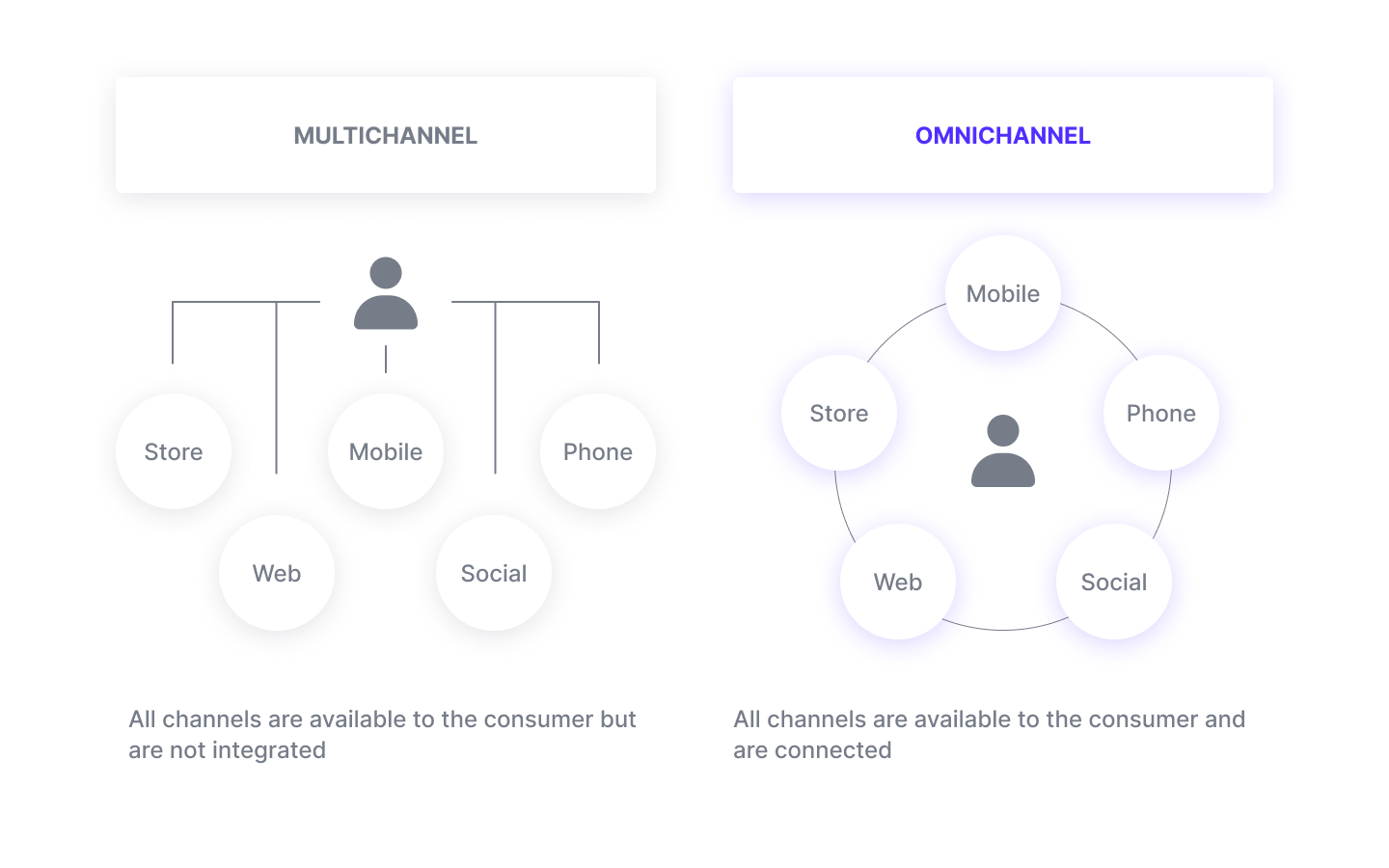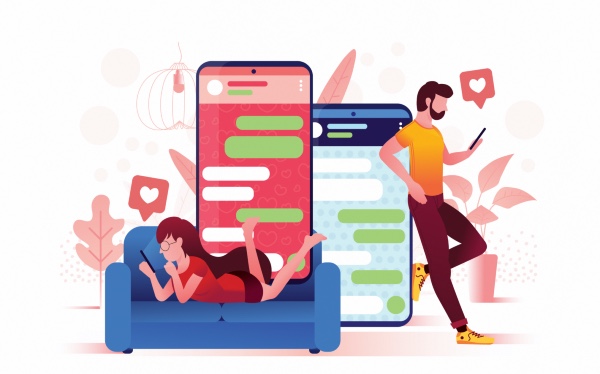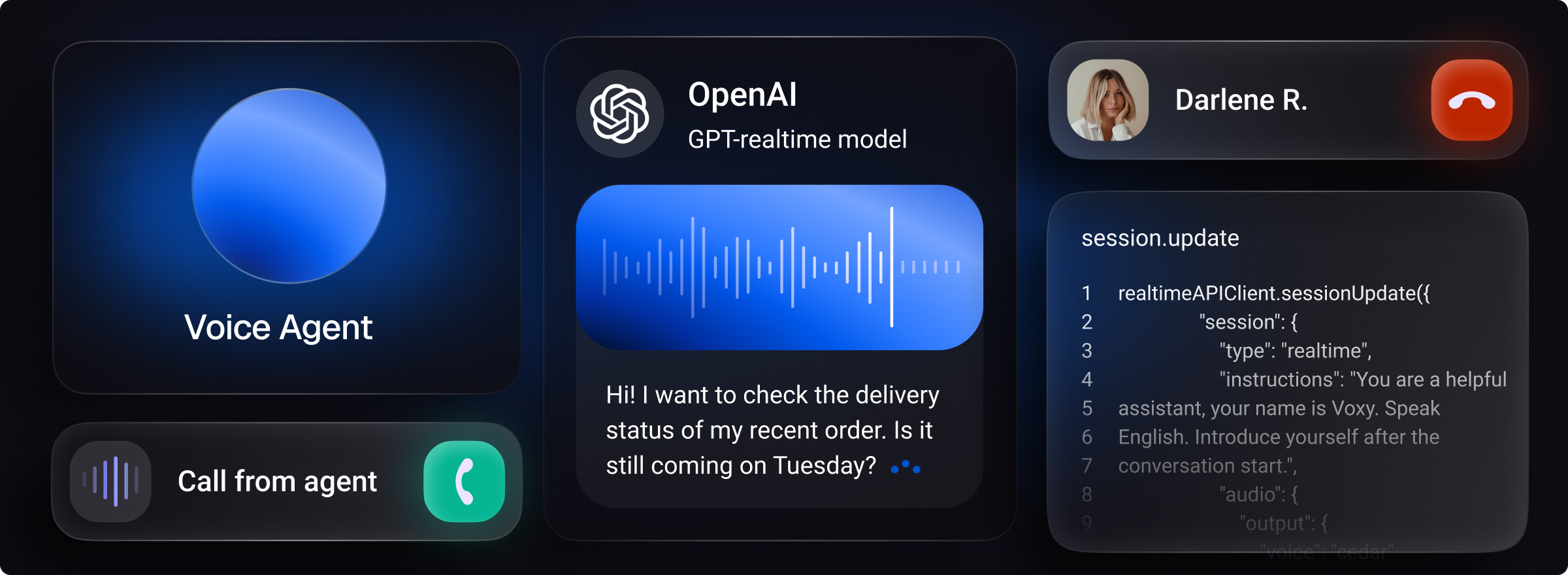More and more customers choose to browse and shop across various communication routes. This development requires many businesses to coordinate multiple channels and platforms to fulfill their audience’s needs. Plus, with an ever-growing number of messages and documents sent on a daily basis, it is getting harder for companies to stay on top of everything. A single customer communication management tool is an effective way to solve this issue.
What Is Omni-Channel?
Omni channel (“all”, “every”) is a strategy to remove the boundaries between different sales and marketing platforms – traditional street-side, social selling, telecoms, websites, and social media. Rather than dealing with all channels in parallel, an omni channel platform integrates and coordinates everything in one place.
These days, many companies have different platforms and physical stores. They should expect and be prepared for customers moving across them. To stay competitive, they need to ensure consistency in promotions, messaging, and language and understand customer behavior at all touchpoints.
Regardless of where a customer interacts with a brand, online or in person, they should be able to make a purchase quickly. This method helps companies to stay on top of optimum stock levels in each location and keep information up-to-date.
How Does It Work?
Customers are often given options on how they want to communicate or interact with a business. That said, you will almost certainly irritate them if you show them the same information time and time again. Conflicts in information and availability in online and offline channels will alienate them even more.

An omni channel solution addresses this issue by incorporating multiple avenues. This method adds value to the individual and collective experience of all of them. A coherent, easily recognizable messaging is implemented everywhere, namely in:
- Mobile applications
- Social media accounts
- Brick-and-mortar stores
- Customer support materials
- Promotional resources
Omni-Channel & Multichannel Differences
Simply utilizing several channels in your business operations is not considered omni channel. For example, a user may submit information on the website, but then a customer service agent can't access it when the same user contacts them on a different platform. While customers can interact with this company on different channels, these avenues are not integrated.
Omni channel, on the other hand, weaves together all data collected on customers as well as current information on products, services, etc. An omni channel experience implies a seamless switch across channels and unified rather than fragmented information.
Omni-Channel Customer Experience
Omni channel helps you combine online and offline forces. Businesses have more control over what is happening in all physical locations as well as digital stores, which reflects well on the customer experience.
Your clients feel the continuity of interaction with your brand. No matter where is it initiated, the conversation can be picked up in a different form, device, or time. It helps you create a customer-focused approach and build upon all your past communications with the client.
Customers receive uniform messaging, rules, legal disclaimers, images, and other content fragments. It helps brands seem more professional and put-together. Especially for first-time buyers, it's crucial that you prove yourself trustworthy across multiple channels. Online users tend to research new companies on more than one platform.
Omni-Channel and Different Spheres of Business
Naturally, an omni channel model needs to be tailored based on companies’ specific needs. It can be designed to suit conventions in different industries and spheres of business. Here are some examples of how this solution can be implemented along with successful case stories:
- Retail: Integrated consumer analytics, supply chain, shipping, and other data help you unify all information systems as a whole. For example, Sephora customers can scan items in-store and check them online, all past purchases, watch tutorial videos, and find the nearest location.
- Food and beverages: Omni channel gives insight on how to remove the effort from the buying process. Starbucks offers a smooth transition from a physical card to a mobile app, which allows you to order drinks ahead of time, shows menu additions, etc.

- Banking: People expect financial services to always be on top of everything. As soon as they swipe their cards, this information should be shown in their online banking. This arrangement has become a new norm, but Bank of America is a notable example.
- Entertainment: By offering customers unique experience across all mediums, Disney has mastered omni channel. For example, they introduced the Magic Band program to enter parks, open hotel rooms, access FastPass lanes, make purchases, and a lot more.
- Healthcare: Getting relevant medical information quickly is not only about the quality of service, but, more importantly, patient safety. The University of Pittsburgh Medical Center (UPMC) operates across more than 30 hospitals and 600 clinics. Omni channel helped them achieve the seemingly difficult task of coordinating this amount of information.
Pros and Cons of Omni-Channel
Before you begin to set up an omni channel experience, it’s reasonable to examine both the pros and cons. Here is how it helps businesses adapt to an increasingly demanding customer attitude:
- Gaining a competitive edge – People expect companies to provide relevant information about their products/services on all platforms. Brands can't afford to have some of their channels lagging behind.
- Increasing customer satisfaction – The customer journey runs more smoothly online as well as offline. Plus, companies can create a personalized experience on individual channels.
- Improving conversion rates – Your customers make way less effort to make a purchase whenever and wherever they want.
- Engaging with the right target groups – An integrated platform helps companies figure out customer personas and make their content appealing to specific groups.
Omni channel comes with a set of drawbacks that you should take into consideration:
- Increasingly more complex marketing activities– It will require more time and effort to come up with comprehensive strategies.
- Impact on customer service quality – You may not be able to manage everything at once or master multitasking quickly.
- No room for error – If an employee puts the wrong information into the system, it is displayed across all channels. Before someone corrects the mistake, it may cause confusion among users or even revenue loss.
Conclusion
The omni channel approach addresses many retail and e-commerce challenges brought by different communication mediums. It offers a holistic and strategic perspective on customer experience and ensures a smooth transition across all channels.
While omni channel communications are somewhat challenging to implement and tune, this solution accommodates both shoppers and companies. Regardless of the channel being used, businesses can engage consumers in every stage of the customer journey. Lastly, from the business’s point of view, less downtime and fewer hang-ups should help all processes run more effortlessly.





